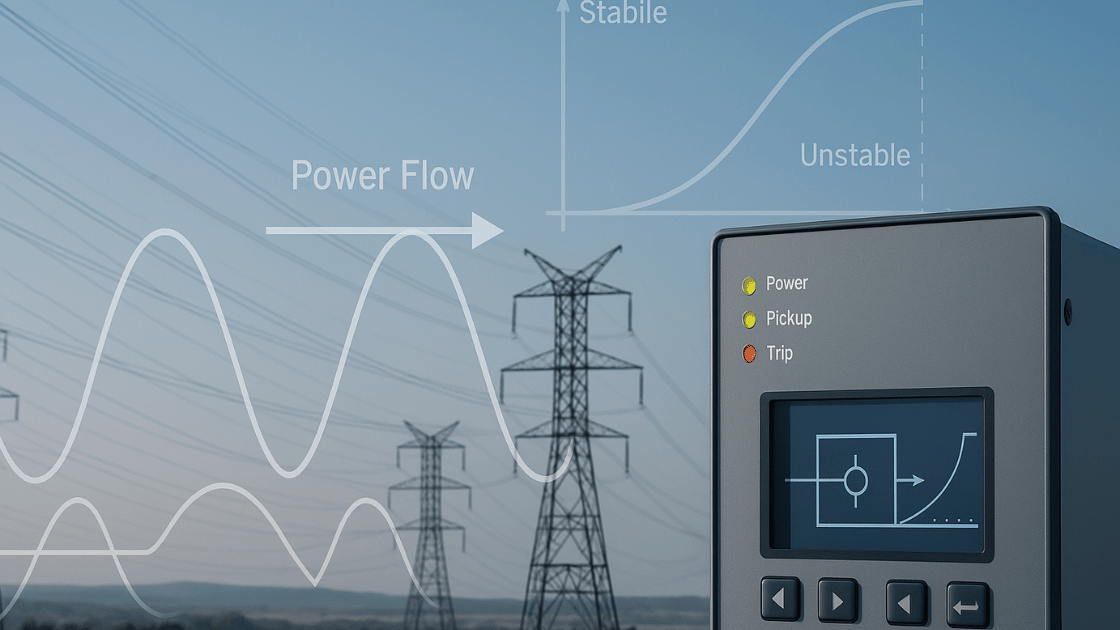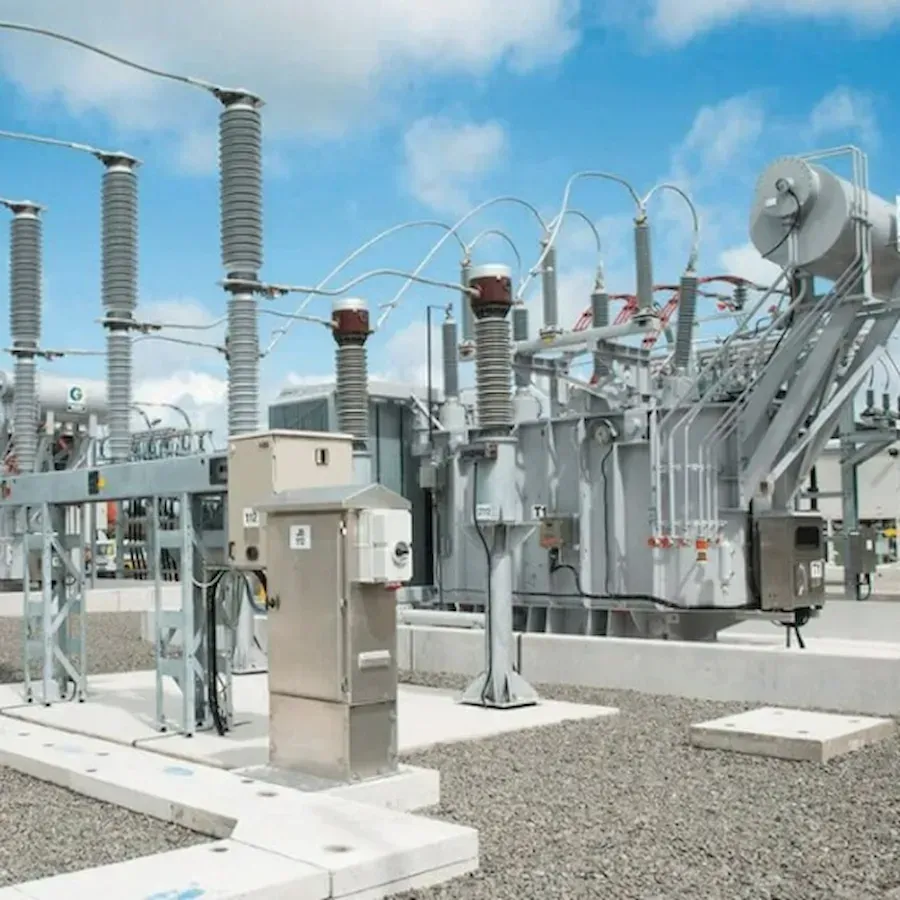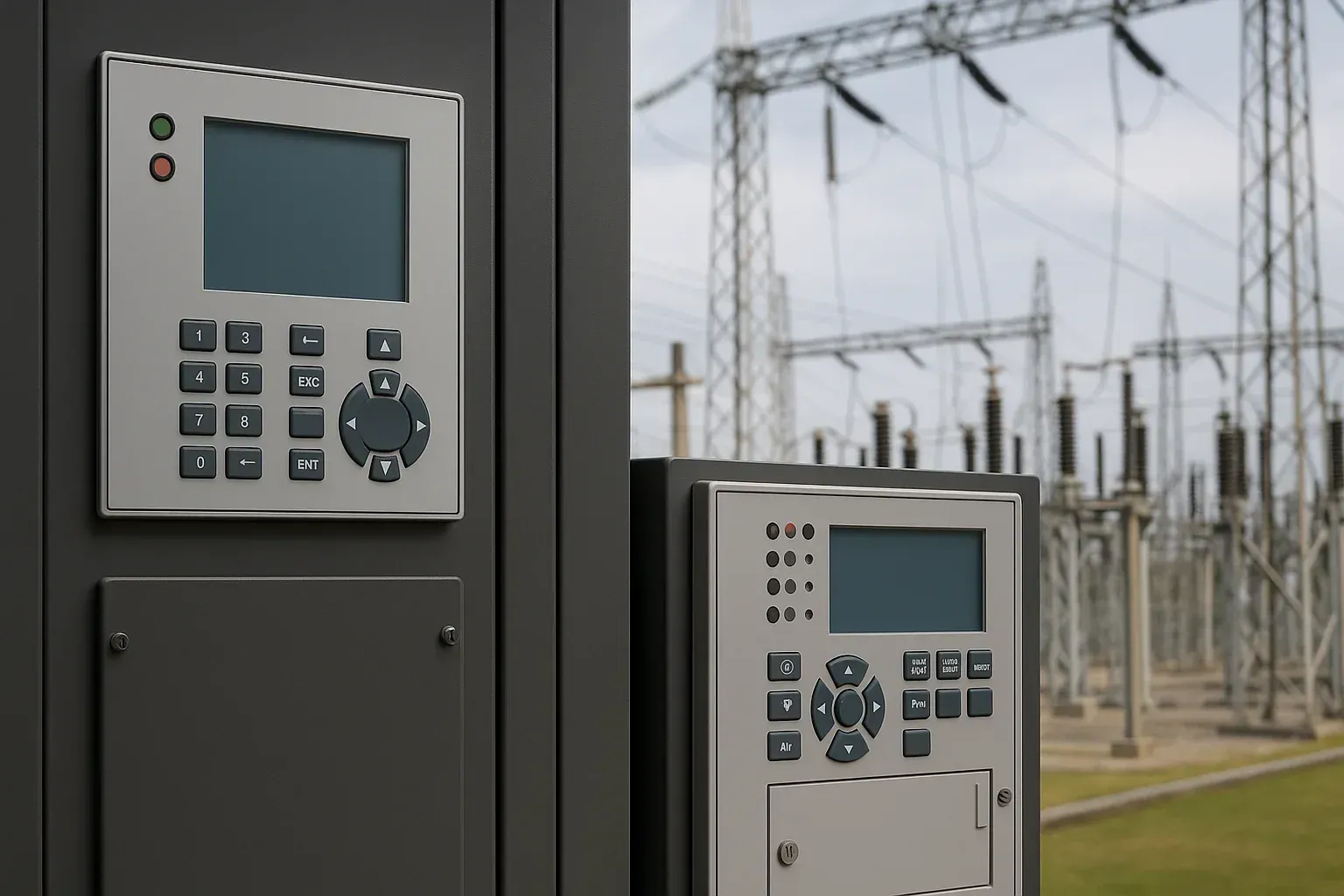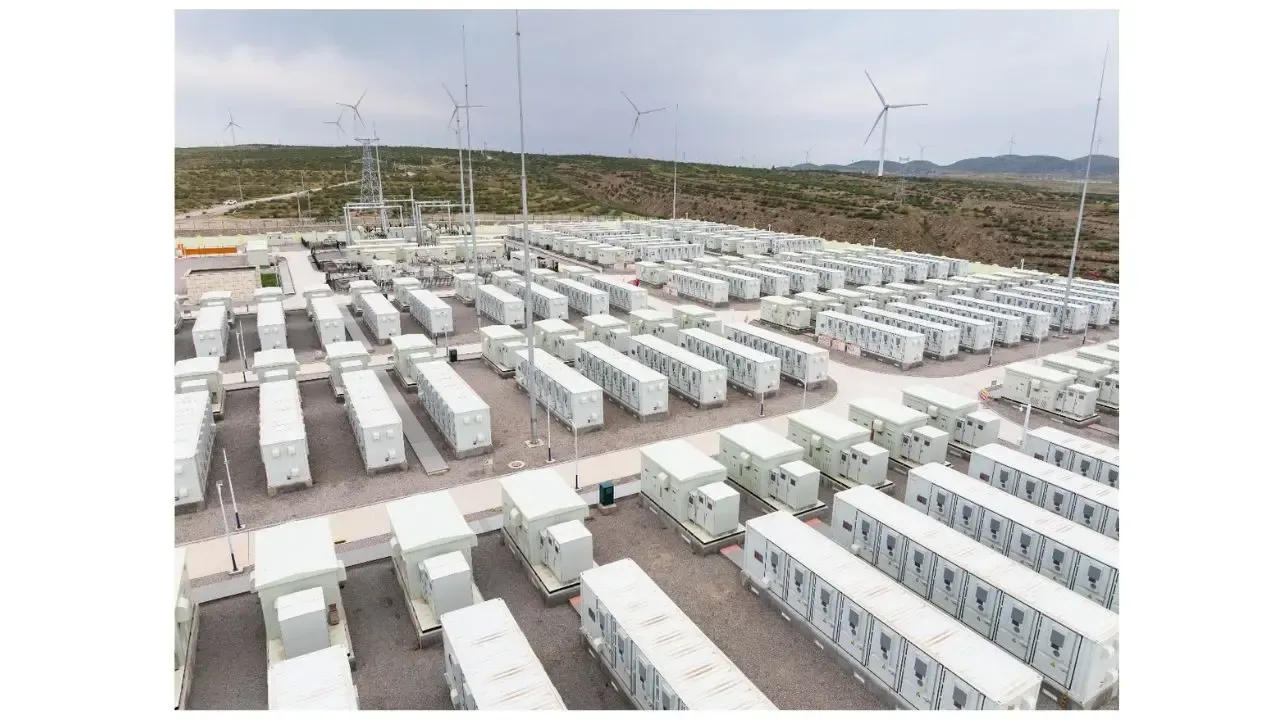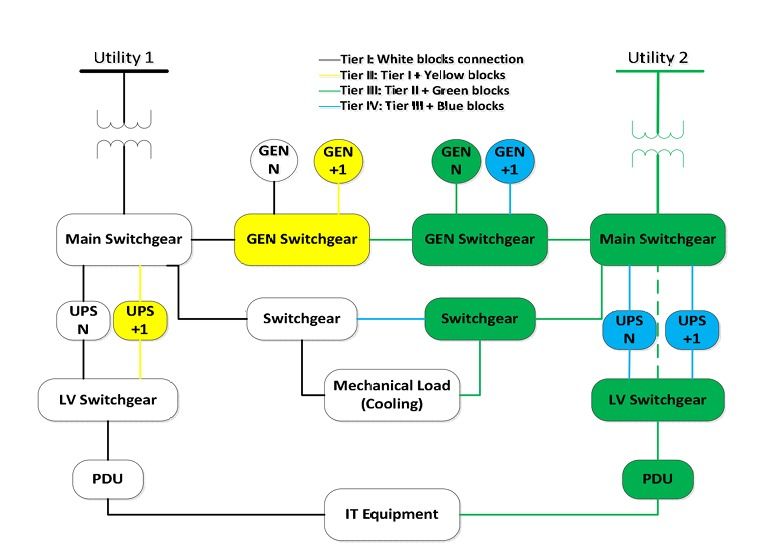A Coordinated Electric System Interconnection Review—the utility’s deep-dive on technical and cost impacts of your project.
Challenge: Frequent false tripping using conventional electromechanical relays
Solution: SEL-487E integration with multi-terminal differential protection and dynamic inrush restraint
Result: 90% reduction in false trips, saving over $250,000 in downtime
PRC-026 Compliance Guide for Transmission Relay Performance During Stable Power Swings
June 14, 2025 | Blog
Introduction
Modern transmission networks face an increasing challenge: maintaining system stability while protecting critical infrastructure. As the complexity of Bulk Electric Systems (BES), grows, so does the risk of inadvertent relay operations during stable power swings. NERC PRC-026 was introduced to mitigate this risk by ensuring that load-responsive relays do not operate incorrectly under stable power swing conditions.
In this comprehensive article, Keentel Engineering explores the core concepts, practical evaluation methodologies, and lessons learned from implementing PRC-026 compliance.
What is PRC-026?
The PRC-026 standard (Relay Performance During Stable Power Swings) ensures that protective relays in the Bulk Electric System remain secure and stable during non-fault conditions that involve stable power swings.
Its main objective is to improve relay security while preserving proper fault detection and enabling reliable out-of-step tripping when necessary.
Key Terms and Concepts of PRC-026
Understanding PRC-026 requires familiarity with several foundational terms:
Power Swing
Variations in three-phase power flow caused by changes in generation/load, line switching, faults, or system disturbances.
Stable Power Swing
A swing in which generators do not experience pole slip and the system settles into a new equilibrium.
Unstable Power Swing
Occurs when a generator or group of generators slips poles, requiring corrective action.
UPSR (Unstable Power Swing Region)
A geometrically defined area on the impedance plane where stable operation must be maintained. Relay trip characteristics must not intersect this region.
Two-Port Equivalent Network
A reduced equivalent circuit representing the BES element under study and the source impedances at both terminals (sending and receiving).
System Separation Angle (δ)
Angle difference between source voltages at the two ends of the BES element. A separation angle of 120° defines the stability boundary in PRC-026.
BES Elements and Relays Subject to PRC-026
Elements
- Transmission lines
- Transformers
- Generators
Relays
Load-responsive relay elements that can trip in <15 cycles:
- Phase distance relays (including those in schemes like DUTT, DCB, POTT, PUTT, DCUB)
- Out-of-step protection elements
- Certain overcurrent relays (when not excluded)
Noteworthy Exclusions
- Relays supervised by power swing blocking
- Relays enabled only during failure of other relays
- Switch-onto-fault relays
- Voltage-restrained/controlled overcurrent relays
How to Evaluate PRC-026 Compliance
1. Building the Relay List
Start by identifying all relay elements that could trip a BES element. This usually requires reviewing:
- Breaker tripping schematics
- Protection documents
- Relay settings
Tip: Don't exclude phase distance elements with time delays >15 cycles if they participate in high-speed communication-aided schemes (such as DUTT).
2. Transmission Line Relay Evaluation
Phase Distance Relays
a. Instantaneous Zones
- Check if the relay characteristic fully fits inside the UPSR boundary.
- If not, reduce reach, change to a lens characteristic, or use blinders.
b. Delayed Zones (<15 cycles)
- Same evaluation as instantaneous zones.
- Alternatively, increase delay to ≥15 cycles if coordination and stability allow.
c. DUTT Schemes
- Evaluate remote relay characteristics at the local terminal UPSR.
- Example: Remote Mho circle in DUTT must be fully inside local UPSR.
d. DCB Schemes
- Evaluate the local zone first.
- If out of UPSR, check reverse element contribution. Be cautious with infeed effects.
e. POTT/PUTT/DCUB Schemes
- The intersection of local and remote zones must be fully inside UPSR.
Out-of-Step (OOS) Protection
- Typically implemented in line relays.
- The tripping region (defined by blinders or circles) must be inside UPSR.
Phase Overcurrent Relays
- Generally excluded unless improperly supervised.
- If evaluated, set pickup > computed threshold per PRC-026 guidelines.
Relays That Tripped on a Power Swing
- Must be evaluated against Attachment B criteria.
- Use COMTRADE records for analysis.
Time-Domain Phase Distance Elements
- New and challenging to evaluate.
- Contact relay manufacturer for guidance.
3. Transformer Relay Evaluation
- Differential relays are excluded.
- Evaluate any phase distance elements that protect both the line and transformer.
- Carefully adjust impedance levels across different voltage sides using per-unit conversion or transformer ratio-based conversion.
4. Three-Terminal Lines
- Construct three two-port equivalents.
- Evaluate combinations of local/remote relay characteristics.
- POTT: Overlapping region of local and remote zones must stay in UPSR.
- DCB: Local zone (excluding common region covered by remote zones) must stay in UPSR.
5. Impedance Conversion at Different Voltage Levels
When evaluating relays installed at different voltages (e.g. low-voltage side of transformer), scale impedance values properly:
- Use per-unit conversion
- Adjust primary settings based on PT/CT ratios and voltage ratio.
6. Challenging Real-Life Example
A 230kV three-terminal line protected with a relay on the 13.8kV side of a transformer.
- Required careful model reduction and impedance conversion.
- Used blinders to correct DUTT scheme violation at remote terminal.
7. Common Corrective Actions
- Reduce relay reach.
- Change from Mho to lens or quadrilateral characteristic.
- Add blinders or power swing blocking.
- Use remote supervision in communication-aided schemes.
- Replace machine reactance with a less conservative value if stability allows.
- Use transient stability studies to justify reduced UPSR if possible.
For system modeling and transient simulations, see our
Power System Studies service.
Automating PRC-026 Compliance
A major contribution of this paper is describing a software tool that automates compliance evaluation:
- Computes two-port equivalents
- Models relay behavior (phase comparator models)
- Evaluates overcurrent and distance relays
- Generates pass/fail reports with safety margins
- Supports large batch processing for utilities
Conclusion
- Review breaker schematics carefully to build the correct list of relays.
- DUTT relays must be evaluated even though the standard doesn't explicitly list them.
- Multi-terminal elements require special care.
- Use correct impedance scaling when evaluating across different voltage levels.
- Automated tools can greatly streamline compliance studies.
Need Help with PRC-026 Implementation?
Keentel Engineering offers complete support in PRC-026 studies, relay modeling, transient stability analysis, and compliance documentation. Our NERC Compliance team works closely with utilities and asset owners to maintain system reliability and avoid regulatory risk.
Contact Us today for technical consultation or a compliance evaluation quote.
Why Choose Keentel Engineering
At Keentel Engineering, we bring deep technical expertise in protection system modeling, transient stability analysis, and relay coordination. Our engineers have hands-on experience with PRC-026 compliance audits and software automation tools that streamline complex evaluations. Whether you’re a transmission operator, generator owner, or protection consultant, we ensure your systems remain secure, stable, and audit-ready. We don’t just interpret standards — we help you implement them with precision.
FAQs: PRC-026 for Electrical Engineers
1. What is PRC-026?
It is an NERC reliability standard designed to ensure that load-responsive relays do not trip during stable power swings. This prevents false trips that could compromise grid stability.
2. What is a stable power swing?
A power swing that does not result in pole slip and reaches a stable post-disturbance operating condition. These swings occur during system changes but do not require relay action.
3. What is an unstable power swing?
A swing where generator(s) experience pole slip — requiring tripping to avoid system instability. This is a fault-like condition that must be detected correctly by relays.
4. What is the UPSR?
Unstable Power Swing Region — a zone on the impedance plane where relay tripping must be avoided. Relay characteristics should not intersect this area during stable swings.
5. What relay types must be evaluated?
- Phase distance
- Out-of-step protection
- Certain overcurrent relays
- Relays in DUTT, DCB, POTT, DCUB, PUTT schemes
All relays that can trip within 15 cycles under stable swing conditions must be considered.
6. Are differential relays included?
No. Differential relays are excluded. These relays operate based on current differences and are not typically affected by power swings.
7. Are phase overcurrent relays included?
Only if they are unsupervised or otherwise improperly configured. Proper supervision or configuration may exempt them from PRC-026.
8. How are multi-terminal lines evaluated?
By creating multiple two-port equivalents and analyzing relay characteristics at each terminal. Each combination of local and remote ends must be considered.
9. How is UPSR constructed?
Using source impedance data and generator voltage angle separation up to 120°. The result is a boundary region within which relays must not trip.
10. What is the key angle separation in PRC-026?
120 degrees. This defines the stability boundary and is used in constructing the UPSR.
11. Should DUTT relays be evaluated?
Yes! Even though not explicitly listed, DUTT relays that trip BES elements must be evaluated. Their role in high-speed tripping makes this essential.
12. How should settings be adjusted at different voltage levels?
Use per-unit conversion or proper scaling of impedance across PT/CT and voltage ratios. This ensures accurate modeling and correct relay zone comparison.
13. How should reverse elements be treated in DCB?
Consider infeed effects. Do not blindly trust setting files — study the actual protection zones and system topology to assess true reach.
14. Are time-domain distance relays difficult to evaluate?
Yes — contact manufacturers, as these designs vary and may lack documentation. Traditional modeling techniques may not apply directly.
15. What tools are useful for PRC-026 evaluation?
- Short circuit analysis tools
- Relay modeling software
- Automated PRC-026 compliance programs
These tools simplify model development, evaluation, and documentation.
16. How should violations be corrected?
- Reduce reach
- Add blinders
- Change characteristic (Mho → lens or quad)
- Supervise with power swing blocking
- Add remote supervision
All corrections must balance relay security with system dependability.
17. What are common mistakes in compliance studies?
- Failing to include DUTT relays
- Excluding delayed zones used in fast trip schemes
- Incorrect impedance scaling across voltage levels
- Trusting relay settings without cross-checking breaker schemes
These errors can lead to non-compliance or missed risks.
18. Is transient stability analysis required?
Not explicitly — but can be used to justify reduced UPSR margins if documented. It's a powerful tool for supporting relay setting changes.
19. What is SPSTM?
Stable Power Swing Trip Margin — quantifies how close a relay is to tripping during a stable swing. It’s an important indicator of compliance and setting conservatism.
20. Should we automate PRC-026 evaluation?
Highly recommended. It saves time, improves accuracy, and ensures consistency. Automation is especially useful for large utilities managing many relays.
21. Is reverse relay reach in DCB fully trusted?
No. Due to infeed conditions, apparent reach may not match actual behavior. Detailed modeling is necessary to validate protection zones.
22. What is the role of COMTRADE records?
Used to analyze actual trips caused by power swings — required for PRC-026 post-event evaluation. COMTRADE provides event waveform data for analysis.
23. What is the impact on protection dependability?
Corrective actions (e.g. adding blinders) must not sacrifice protection dependability — this is a key principle. A balance must be maintained between security and reliability.
24. Can Keentel Engineering assist with PRC-026?
Absolutely. Keentel Engineering offers expert services in:
- Relay compliance evaluation
- Modeling and analysis
- Automated reporting
- Corrective action planning
- NERC audit support
We help ensure secure, auditable, and reliable protection systems.

About the Author:
Sonny Patel P.E. EC
IEEE Senior Member
In 1995, Sandip (Sonny) R. Patel earned his Electrical Engineering degree from the University of Illinois, specializing in Electrical Engineering . But degrees don’t build legacies—action does. For three decades, he’s been shaping the future of engineering, not just as a licensed Professional Engineer across multiple states (Florida, California, New York, West Virginia, and Minnesota), but as a doer. A builder. A leader. Not just an engineer. A Licensed Electrical Contractor in Florida with an Unlimited EC license. Not just an executive. The founder and CEO of KEENTEL LLC—where expertise meets execution. Three decades. Multiple states. Endless impact.
Services

Let's Discuss Your Project
Let's book a call to discuss your electrical engineering project that we can help you with.

About the Author:
Sonny Patel P.E. EC
IEEE Senior Member
In 1995, Sandip (Sonny) R. Patel earned his Electrical Engineering degree from the University of Illinois, specializing in Electrical Engineering . But degrees don’t build legacies—action does. For three decades, he’s been shaping the future of engineering, not just as a licensed Professional Engineer across multiple states (Florida, California, New York, West Virginia, and Minnesota), but as a doer. A builder. A leader. Not just an engineer. A Licensed Electrical Contractor in Florida with an Unlimited EC license. Not just an executive. The founder and CEO of KEENTEL LLC—where expertise meets execution. Three decades. Multiple states. Endless impact.
Leave a Comment
We will get back to you as soon as possible.
Please try again later.
Related Posts


